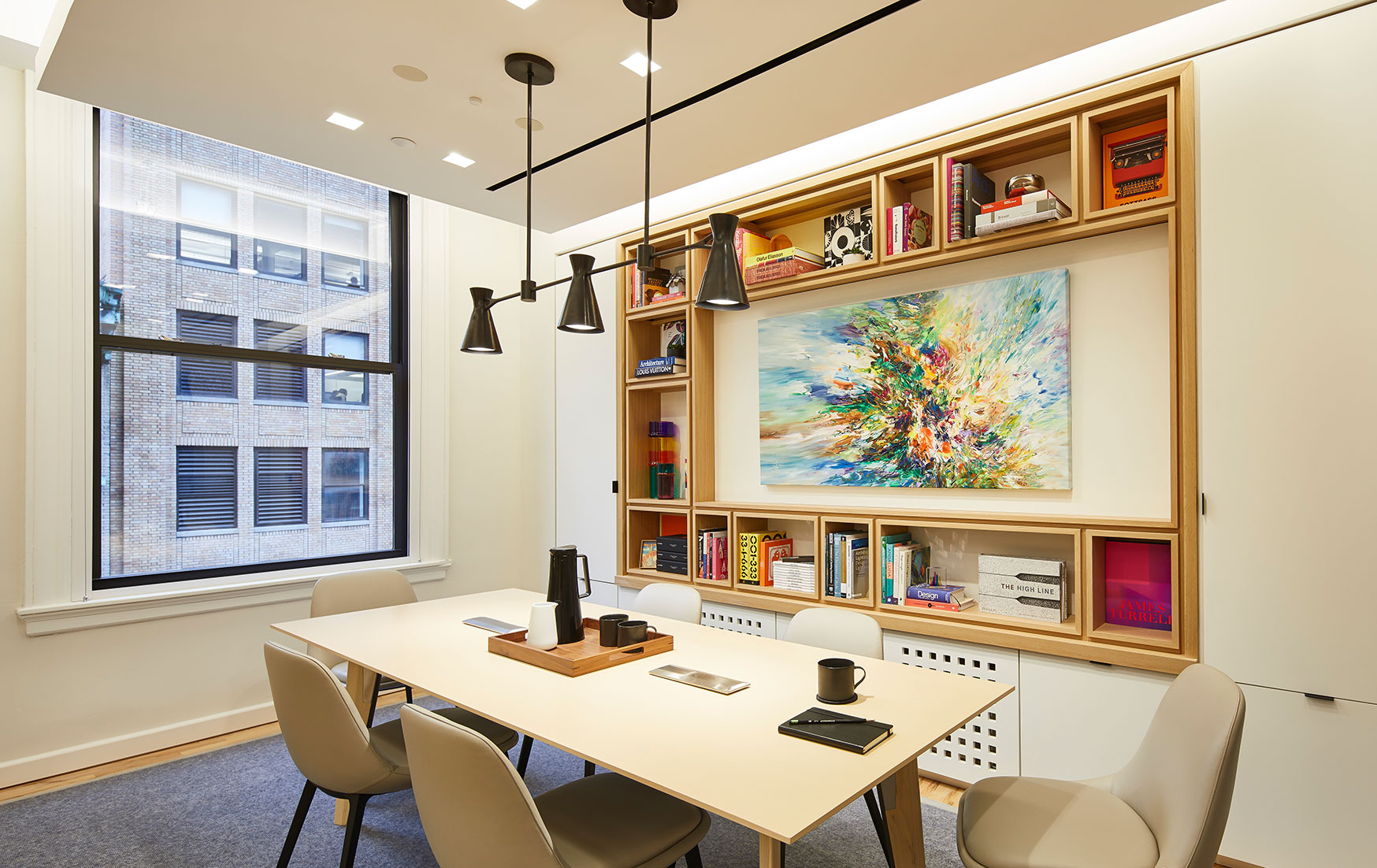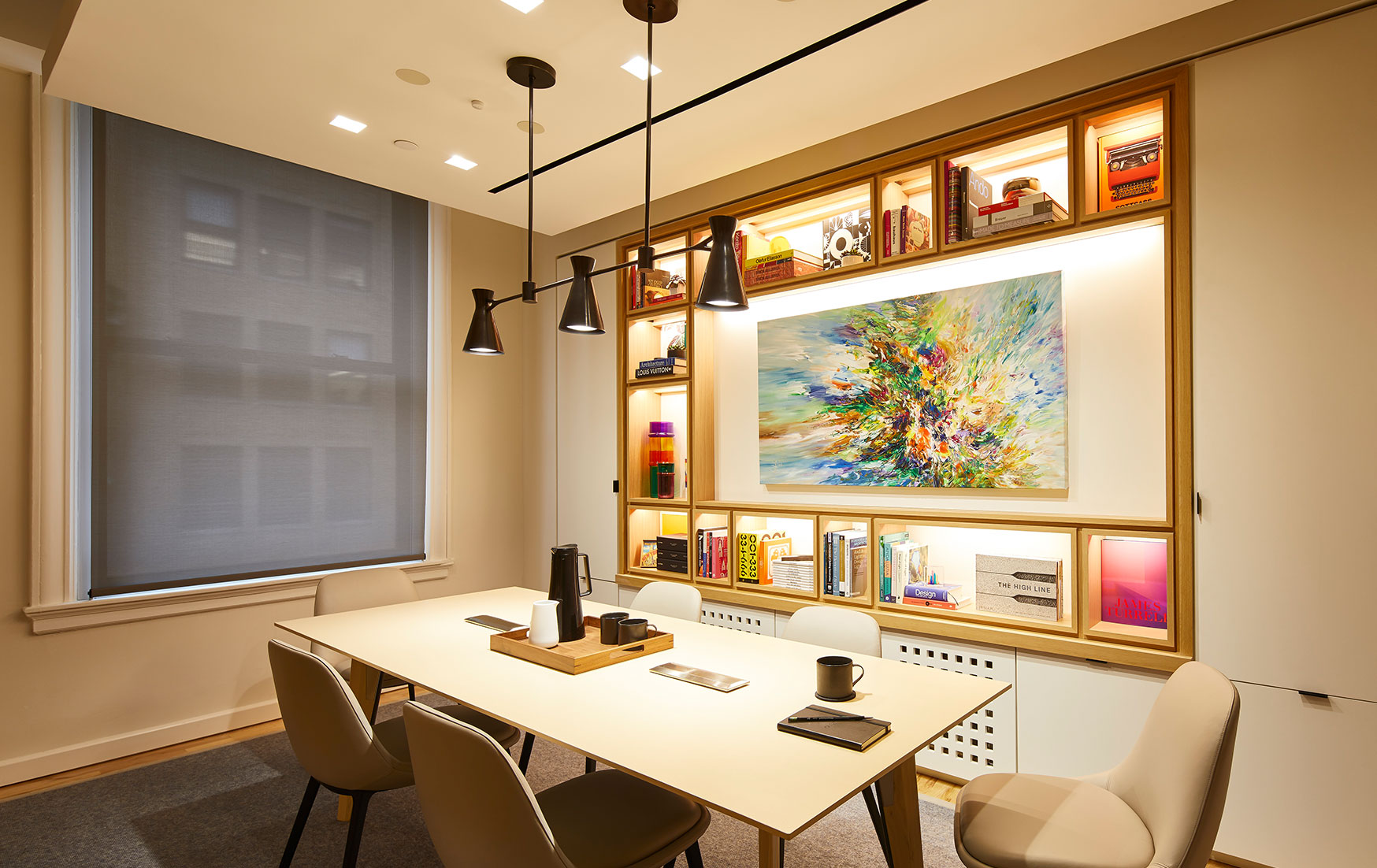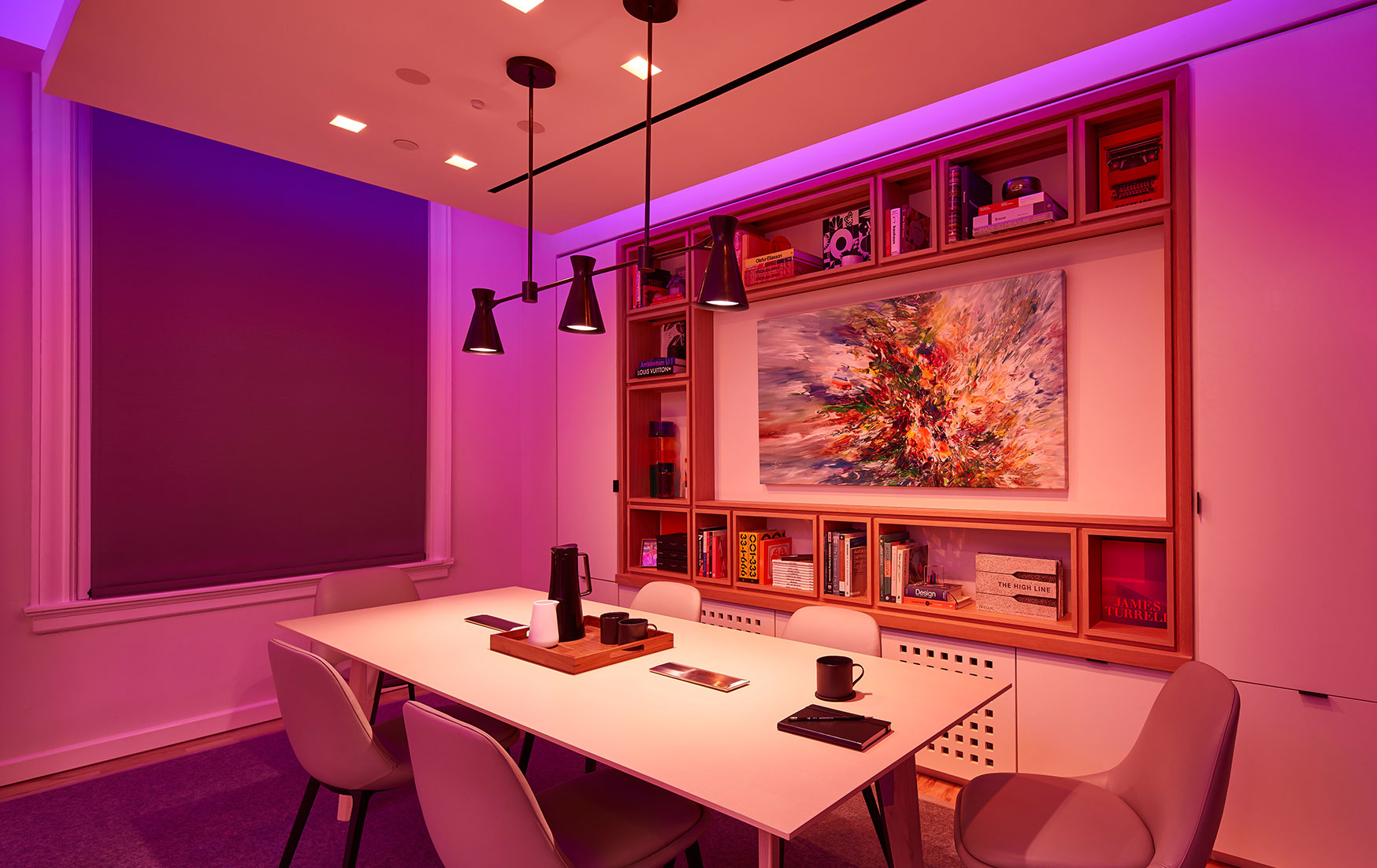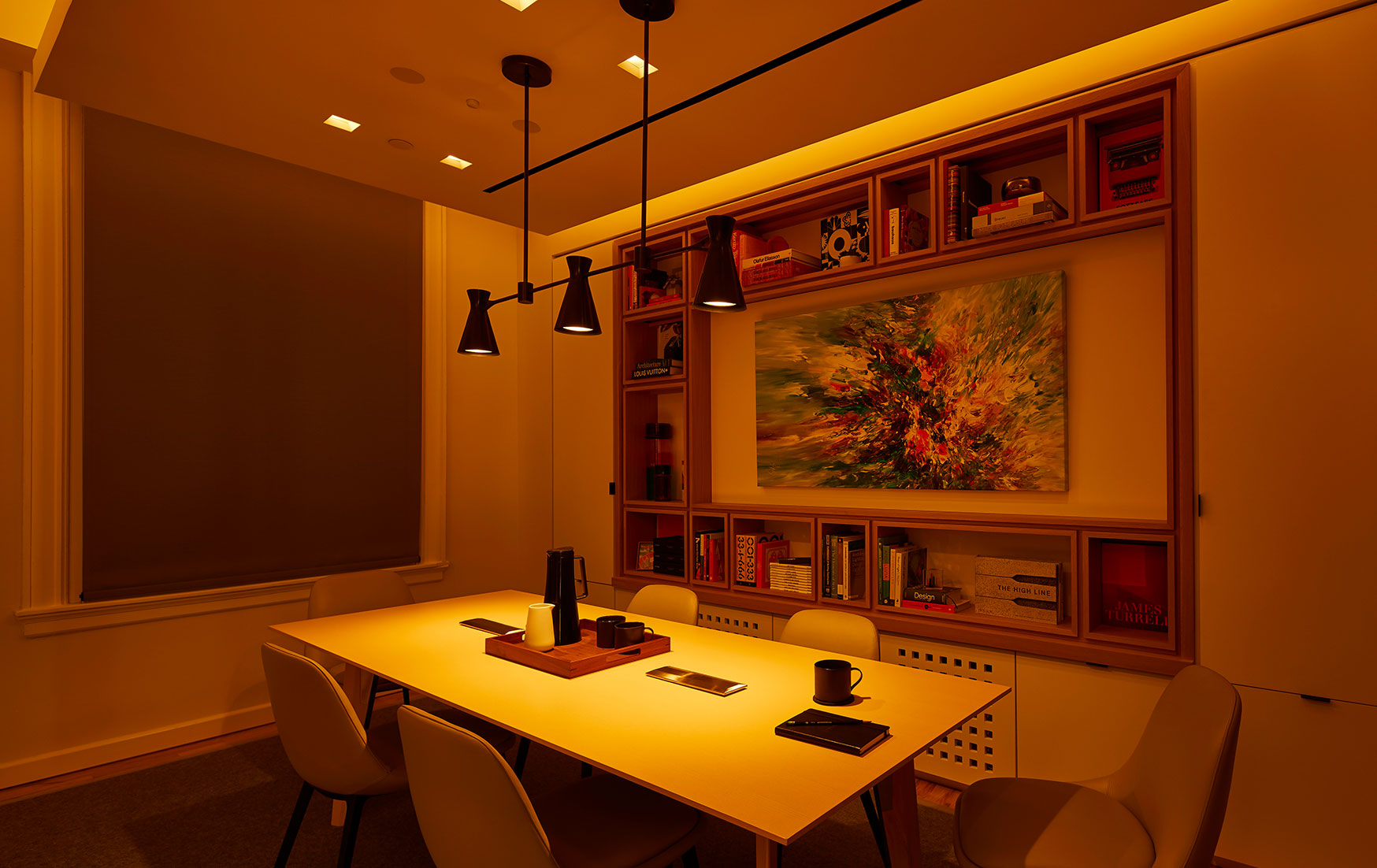The Path to WELL Platinum
Date
February 3, 2025
Get behind-the-scenes insight on how Lutron's Global Experience Center in New York City earned WELL Platinum certification in this interview with Rob Laterza, Sr. Manager of Lutron Experience Centers and Erin Payne, Global Experience Center Supervisor.
Author
Lutron
Read
9 minutes
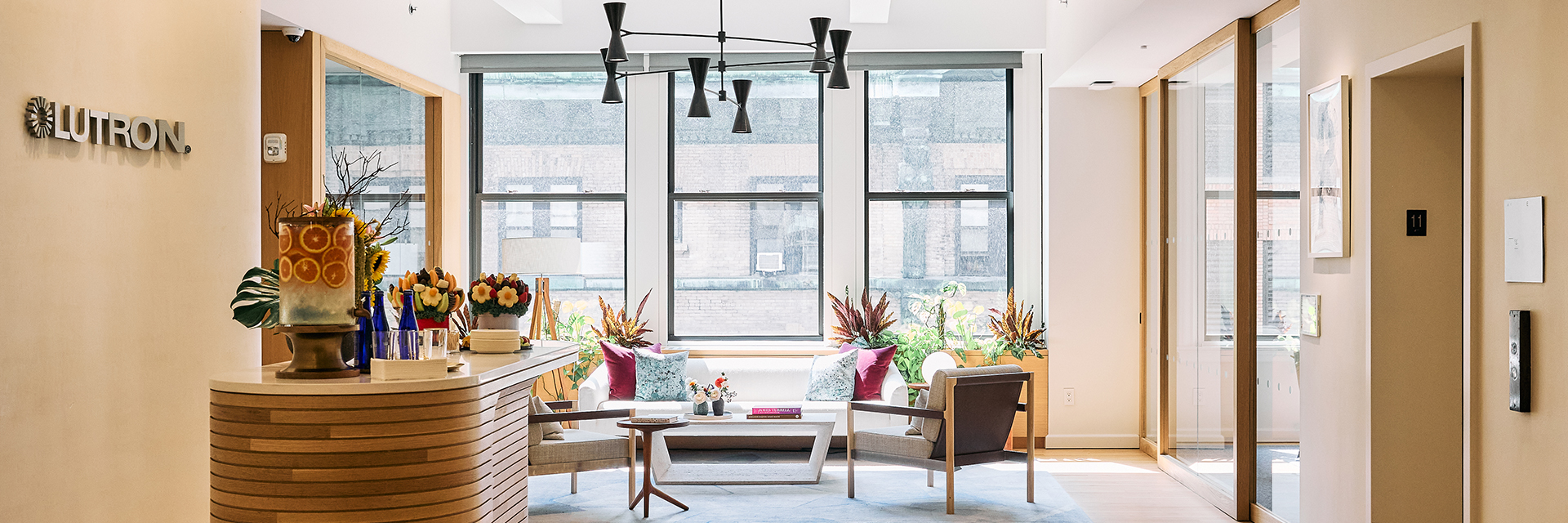
Erin: Thank you! We worked with some amazing people at COOKFOX, JLL, and IWBI who helped us get there. The WELL Building Standard is a performance-based system designed to improve the relationship between the built environment and human health and well-being. There are ten core WELL Concepts: Air, Water, Nourishment, Light, Movement, Thermal Comfort, Sound, Materials, Mind, and Community. To achieve the various levels of WELL certification, a building must earn credits in these Concepts. Lutron earned enough credits to achieve the highest, or Platinum, certification under the stringent WELL v2 pilot standard.
Rob: In terms of LEED vs. WELL, the standards are complementary. At a high level, I think of LEED being for buildings, WELL being for people. Designing towards WELL certification allows companies to qualify and quantify their commitment to the occupant experience. LEED certification leans into the operational efficiency of the building.
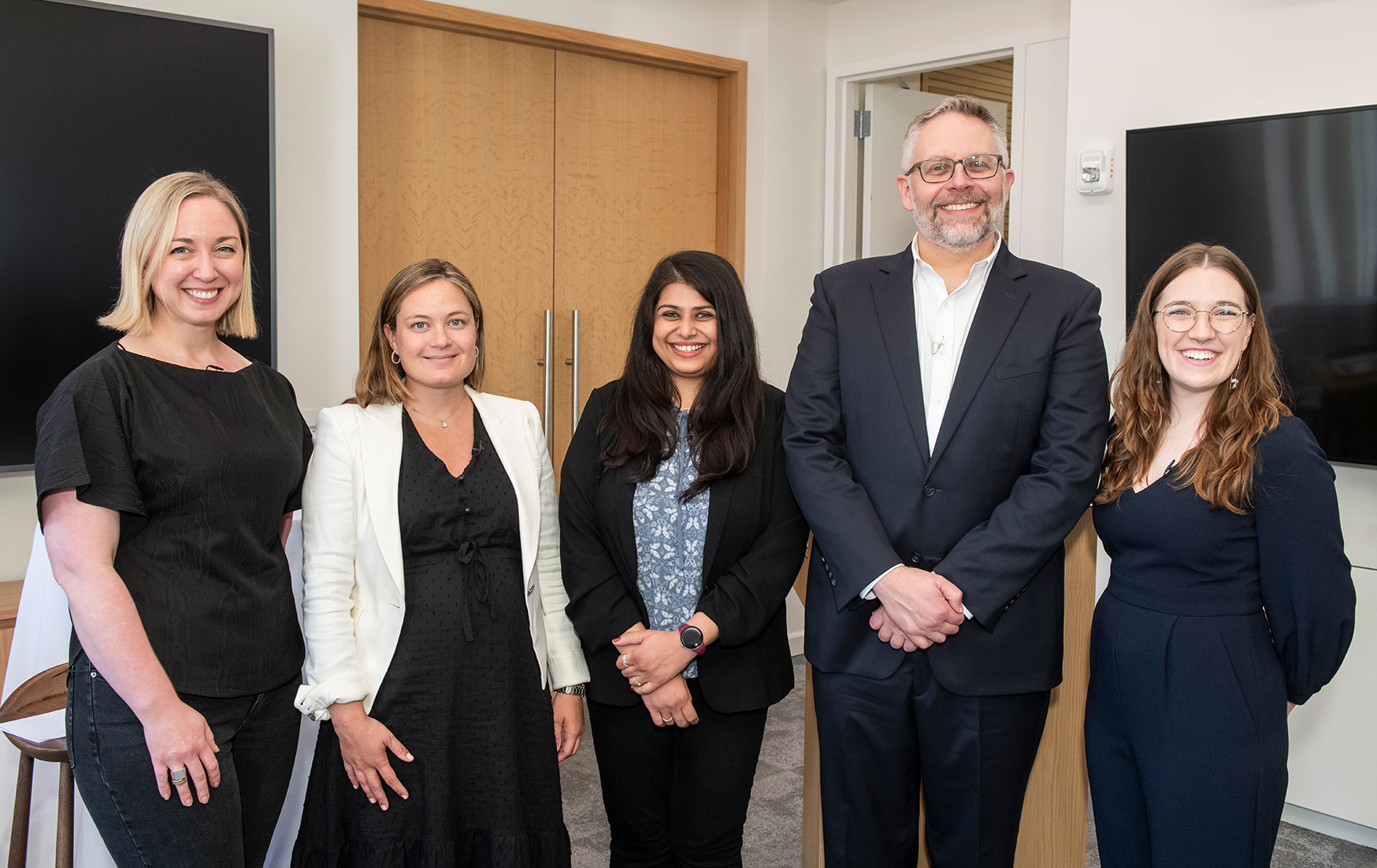
Members of the certification team at a recent panel, from left to right: Bethany Borel of COOKFOX, Lindsay Jacobs of IWBI, Tejaswini Bhirud of JLL, and Rob Laterza and Erin Payne of Lutron.
Erin: Lutron’s products and solutions – from our simplest dimmer to our most comprehensive lighting and shading solutions – are designed to prioritize the human experience for our clients and their customers. Lighting has such a significant impact on the way we feel at work, at home, or anywhere in the built environment. So, it was super important for us to demonstrate that impact to our customers and curate a space that emphasizes well-being for our own employees.
For me, the changes we implemented on our way to achieving WELL are really profound. I’m almost always the first person in the Global Experience Center (GEC), and when I walk off the elevator, the occupancy sensor notices me, the lights brighten to greet me, and I feel welcomed into the space to start my day. Even on long days, I don’t feel like I’m missing out on what’s happening outside. I feel connected to the space, especially since I can adjust the lights to match exactly what I’m doing.
Rob: I agree. The change since we renovated the space is palpable. Getting into the office early isn’t a burden—it’s a delight, and the alone-time feels restorative.
“Light is ubiquitous in the built environment. If we say our products help prioritize and support the human experience within a space, we have to demonstrate it and live it. Our WELL certification is one step toward that goal.”
- Erin Payne
Global Experience Center Supervisor
Rob: We’ll start with the lighting. The integrated lighting and shading control system helped us to achieve a total of 84 points with at least three points per concept—the requirements for the highest level of WELL, WELL platinum.
We also installed advanced air filtration and water quality controls and put tremendous effort into choosing materials that didn’t use harmful paints, stains, or other chemicals in the manufacturing process. One of the other areas we addressed was Nutrition. In addition to our employees, we are constantly hosting guests and holding networking events. The food and drinks we serve are healthy, avoid common allergens, and change frequently. It’s not one thing, but an ongoing effort of many improvements thatto prioritize wellness.
WELL certification is also an ongoing process. You don’t get certified once and earn a lifetime pass. We have to meet these criteria over time to maintain our Platinum certification. It keeps us on our toes and committed to the standard's intent.
Rob: The GEC—and all of Lutron’s nine global experience centers—has a goal of helping visitors reimagine what light can do. Working at an experience center is a hospitality-style role, creating a bespoke customer experience for every person who walks through our door. WELL certification lends itself so well (pun intended!) in a space like this because a lot of WELL’s mission and requirements are centered around the same idea: creating a space where everyone feels welcome, comfortable, and “right.”
As a lighting manufacturer, of course light is a special focus for us. I’m not even sure you can get full points in the Lighting Concept without a control system. At the very least, it’s much easier to get full points there with an integrated lighting and shading system.
Erin: Light is ubiquitous in the built environment. Not every space includes aspects of fitness or nourishment, but every indoor space relies on light to function. If we say our products help prioritize and support the human experience within a space, we have to demonstrate it and live it. Our WELL certification is one step toward that goal.
Rob: The GEC has been able to implement WELL at the highest level, but as a company, we are committed to learning from this experience and working to include some tenets of WELL in all our global experience centers to ensure a welcoming, comfortable, and celebratory environment. In a way, the effort to achieve WELL itself is the prize; working to make our spaces more human-centric is its own reward—a nice certification is just the cherry on top.
“The GEC has been able to implement WELL at the highest level, but as a company, we are committed to learning from this experience and working to include some tenets of WELL in all our global Experience Centers to ensure a welcoming, comfortable, and celebratory environment.”
– Rob Laterza,
Sr. Manager of Lutron Experience Centers
Rob: One thing that comes up all the time is how many businesses are prioritizing in-person collaboration and the return to the office. In New York and most of the country, this can be a big ask; there’s palpable resistance. We have seen that a WELL certified space can go a long way towards proving a company is invested in their employees’ well-being at work. That’s why we are so committed to providing a space that helps our own people enjoy their time in the office and makes our customers want to spend time here as well.
There can also be recruiting benefits to achieving WELL. This is a message we emphasize with building owners and managers – WELL certification can positively impact their biggest investment and asset: their people.
Rob: Here’s an answer I’m sure you’re not expecting – we were kind of shocked to discover how hard it is to find a fragrance-free bathroom cleaner or peroxide-based cleaners that are also antiseptic! It’s a seemingly minute detail that drives home how WELL focuses on things that we don’t always think about but that can matter deeply to people with heightened sensitivities, asthma, or allergies.
It’s so important to get outside our own biases; to think about how a space can be positive and welcoming to ALL people. The lighting, the atmosphere, the materials, even the food and drink options in our break area – it all comes together to create a welcoming space for everyone. Every day, we see the power of a space designed to facilitate people.
Erin: The short answer is come by and see us! Our GEC is on 28th St in Manhattan—next time you’re in town, we would absolutely love to host you. If you’re not local to NYC, we may have an experience center closer or can schedule a virtual experience on your timing-- head to https://experience.lutron.com/us/en to schedule your visit and see you soon.

